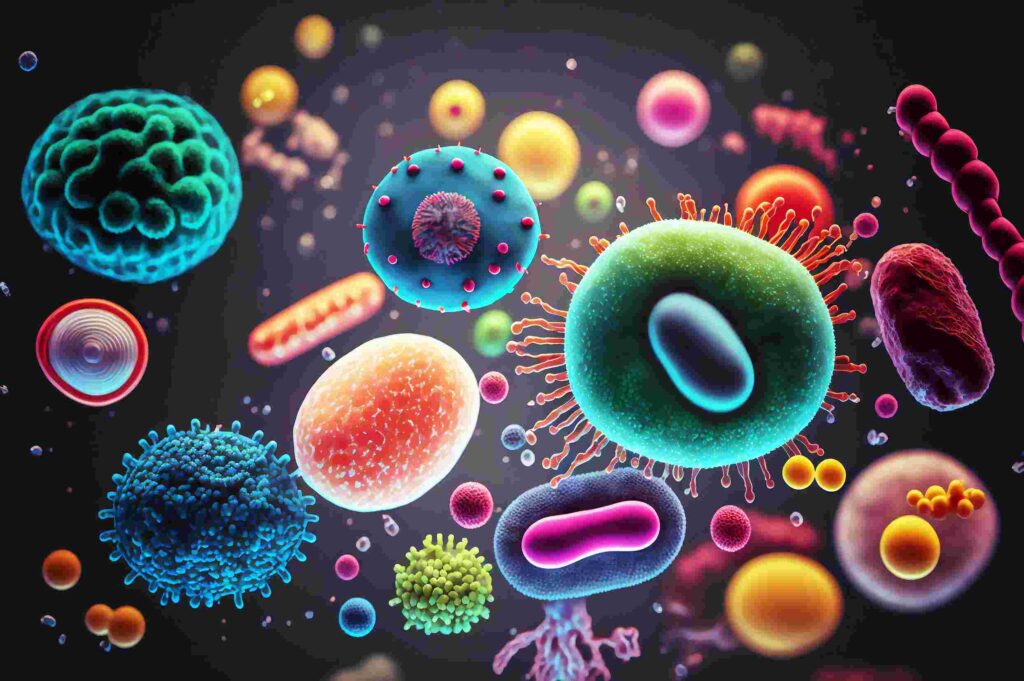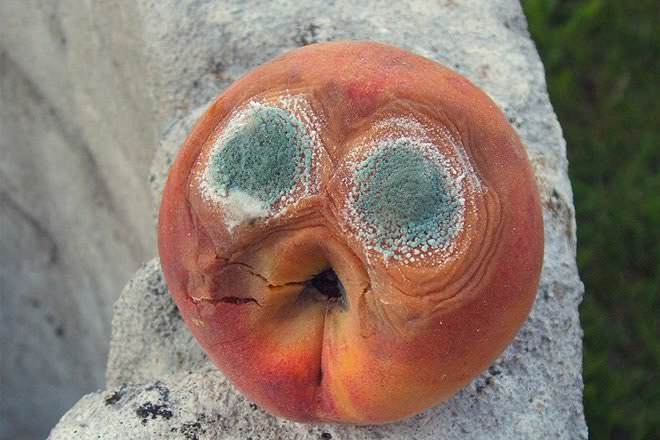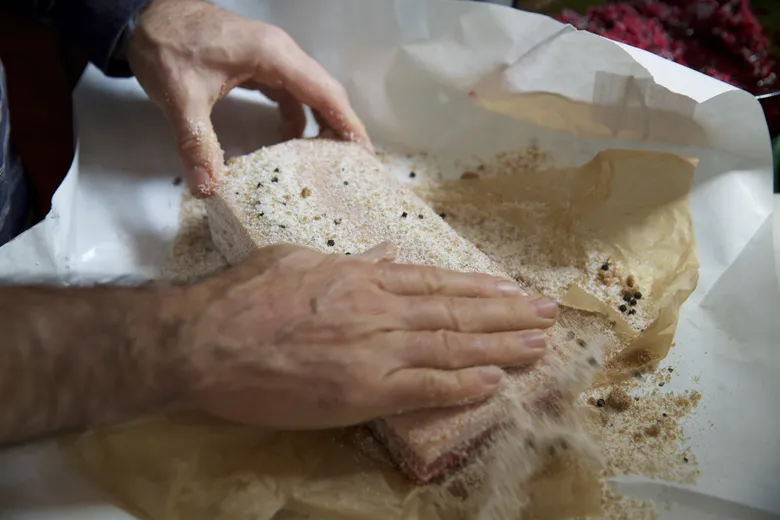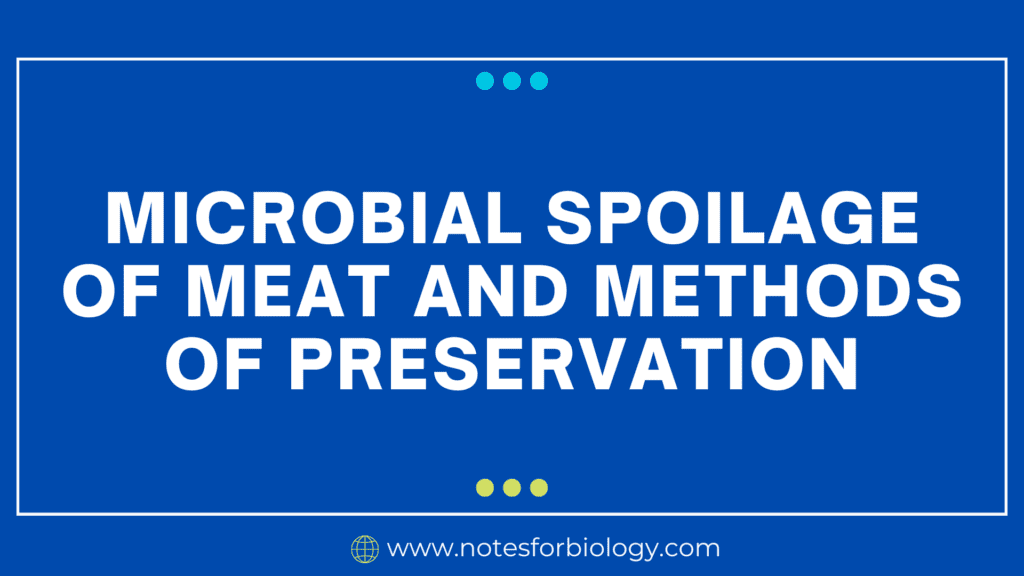Meat, a nutrient-rich and perishable food, provides a feast for microorganisms that can quickly transform it from delectable to dangerous. Understanding how these tiny invaders work and how we can fight them back is essential for ensuring food safety and extending the shelf life of meat.
Table of Contents
Microbial Invaders: A Symphony of Decay
Various microorganisms, including bacteria, yeasts, and molds, are responsible for the spoilage of meat. They thrive in the presence of moisture, nutrients, and favorable temperatures, finding a perfect breeding ground in freshly slaughtered meat.
Bacteria: The Main Culprits

Bacteria are the most prevalent culprits in meat spoilage, with several groups contributing to the deterioration process.
Psychrotrophic Bacteria: These cold-tolerant bacteria thrive at refrigeration temperatures, causing spoilage even in chilled meat. They produce enzymes that break down proteins and fats, leading to off-flavors, discoloration, and slime formation.
Mesophilic Bacteria: This group flourishes at room temperature and can quickly cause spoilage, often leading to putrefaction. They release putrefactive gases and volatile compounds, leading to foul odors and a rotten appearance.
Facultative Anaerobic Bacteria: These bacteria can survive with or without oxygen and thrive in environments where oxygen is limited, such as vacuum-packed meat. They contribute to slime layer, off-flavors, and potential toxin production.
Yeasts and Molds: The Less Common But Significant Players

While less common than bacteria, yeasts and molds can also spoil meat. Yeasts are responsible for souring and off-flavors, while molds can produce visible fuzzy growths, affecting the appearance and taste of the meat.
Signs of Microbial Spoilage: A Visual Guide
Recognizing the signs of meat spoilage is crucial to prevent foodborne illnesses. Here are some common indicators:
Discoloration: Meat may turn gray, brown, green, or even black due to bacterial action.
Slime Formation: A slimy layer on the surface of the meat indicates bacterial growth.
Off-Flavors and Odors: Spoiled meat often develops a sour, putrid, or rancid smell and taste.
Visible Mold Growth: Fuzzy patches on the surface of the meat signal the presence of mold.
Preservation Techniques: Holding Back the Tide of Decay
To counteract the relentless microbial attack, various preservation techniques are employed to extend the shelf life of meat and maintain its quality.
Refrigeration: The Cold War
Refrigeration is a crucial method for slowing down microbial growth by lowering the temperature to inhibit enzyme activity. Maintaining meat at temperatures below 4°C (40°F) significantly reduces the rate of spoilage.
Freezing: A Cryogenic Standoff
Freezing meat at temperatures below -18°C (0°F) effectively halts microbial activity and enzymatic reactions, providing long-term storage potential. However, freezing can affect the texture and quality of meat.
Heat Treatment: A Thermal Assault
Cooking meat to a safe internal temperature eliminates harmful microorganisms and renders it safe for consumption. Pasteurization, using moderate heat, can also extend shelf life by reducing the microbial load.
Drying: Dehydration Tactics
Dehydration removes moisture, creating an unfavorable environment for microbial growth. This method is used for producing dried meats like jerky and sausage.
Curing: Salt’s Protective Shield

Curing involves adding salt and other ingredients to meat, creating a hypertonic environment that inhibits microbial growth. It also imparts flavor and enhances preservation.
Smoking: A Smog of Protection
Smoking meat exposes it to smoke, which contains antimicrobial compounds that inhibit microbial growth and impart a distinctive flavor.
Vacuum Packaging: A Barrier Against Oxygen
Vacuum packaging removes air from the package, creating an anaerobic environment that hinders the growth of aerobic bacteria.
Modified Atmosphere Packaging (MAP): Tailored Atmospheres
MAP involves replacing air with a specific mixture of gases, such as nitrogen and carbon dioxide, to create an environment unfavorable for microbial growth.
Irradiation: Zapping the Microbes
Irradiation uses ionizing radiation to kill harmful microorganisms in meat. It is a safe and effective method for extending shelf life and reducing the risk of foodborne illnesses.
Natural Preservatives: A Plant-Based Defense
Using natural preservatives like spices, herbs, and vinegar can help inhibit microbial growth and enhance the flavor of meat.
Conclusion: A Sustainable Victory
Understanding the mechanisms of microbial spoilage and implementing effective preservation techniques are crucial for maintaining the safety and quality of meat. By combining traditional and modern methods, we can successfully combat microbial spoilage and enjoy the benefits of this nutritious food source. As technology advances, we can expect even more innovative methods to emerge, ensuring a future where meat remains a safe and delectable staple in our diets.
Frequently Asked Questions(FAQ)
What do you mean by Bacteria?
Single-celled bacteria can be found in every part of the planet, from the highest mountains to the ocean’s depths. With an estimated 5 nonillion (that is a 30 with 30 zeros!) bacteria existing on the globe, they are immensely diverse.
Define Psychrotrophic Bacteria?
A unique class of microorganisms known as psychrotrophic bacteria can be found in environments with low temperatures, usually ranging from 0°C to 20°C (32°F to 68°F). Because they have the ability to cause food to decay and possibly produce toxic substances in refrigerated food, they are of great concern to the food industry.
Write about Yeasts and Molds?
Fungi, which are microscopic organisms that are essential to the ecosystem, include molds and yeasts. Yeasts are microscopic fungus made up of single cells that proliferate by budding. In contrast, hyphae, or lengthy filaments, are seen in molds and grow through apical extension.
Related Articles

